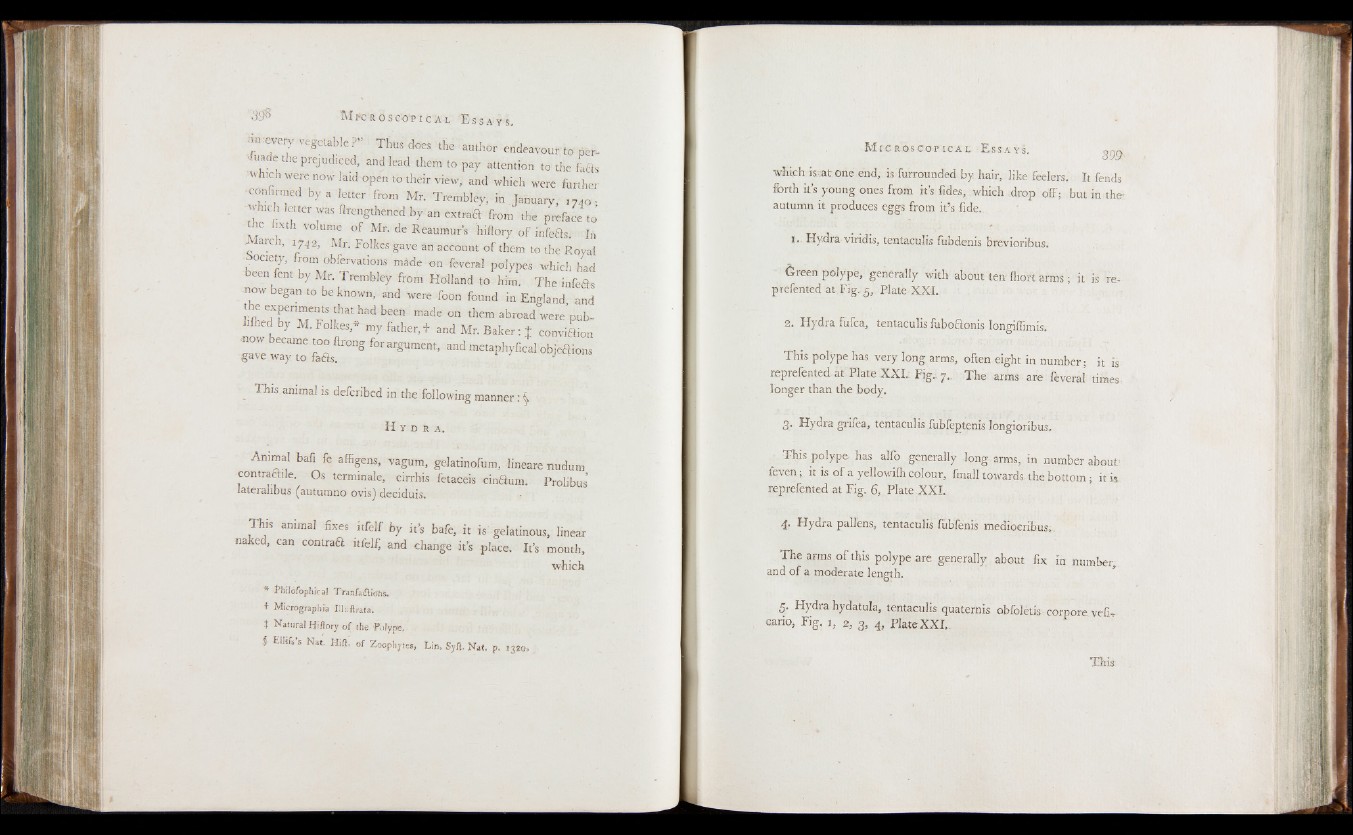
■ in.every vegetable?” Thus does the author endeavour to perv
a d e the prejudiced, and lead them to pay attention to the
which were now laid open to their view, and which were further
■ confirmed by a letter from Mr. Trembley, in January, , 74o -
which letter was ftrengthened by an extra© from the preface to
e ixth volume o f Mr. de Reaumur’s hiftory o f infefts. In
. aic , 1742, Mr. Folkes gave an account o f them to the Royal
oociety, from obfervations made on feveral polypes which had
been fent by Mr. Trembley from Holland to him. The infe&s
now egan to be known, and were foon found in England and
! ’ e et f en™entS that had been made on them abroad were pub-
1 ed by M. Folkes,* my father,t and Mr. Baker: + conviftion
I T e w T T f * ftr° ng ^ argUment’ aad gave way to fa6is. metaPhyfical .objections
. This anima] is b r i b e d in the following manner: §
H y d r a .
Animal bafi fe affigens, vagum, gelatinofum, lineare nudum
contraftile. Os termmale, cirrhis fetaceis cinHum. Prolibus’
lateralibus ^auturnno ovis) deciduis.
This animal fixes ltfe'lf by its bafe, it is gelatinous, linear
naked, can contraH itfelf, and change it’s place. It’s mouth,
which
* Philofophical Tranfafh’tffrs.
t Micrographia IlluArata.
t Natural Hiflory of the 'Polype.
5 Elltfs’s Nat. Hi«, of Zoophytes, Lin. Syfl. Nat. p. 1320.
M i cros cop i ca l E ssays .
which is atone end, is furrounded by hair, like feelers. It fends
forth it’s young ones from it’s fides, which drop off; but in the-
autumn it produces eggs from it’s fide.
I.. Hydra viridis, tentaculis fubdenis brevioribus.
6reen polype, generally with about ten- fliort arms ; it is re-
prefented at Fig. 5, Plate XXI.
2. Hydra fufca, tentaculis fuboftonis longiffimis.
This polype has very long arms, often eight in number; it is
reprefented at Plate XXI.: Fig.. 7.. The arms are feveral times,
longer than the body.
3. Hydra grifea, tentaculis fubfeptenis Iongioribus.
This polype- has alfo generally long arms, in number about-
feven; it is of a yellowilh colour, fmall towards the bottom ; it is
reprefented at Fig. 6, Plate XXI.
4. Hydra pallens, tentaculis fubfenis medioeribus..
The arms o f this polype are generally about fix in number,
and o f a moderate length.
5. Hydra hydatula, tentaculis quaternis obfoletis corpore. vefi-
cario, Fig. 1, 2, 3, 4, PlateXXI,.
This